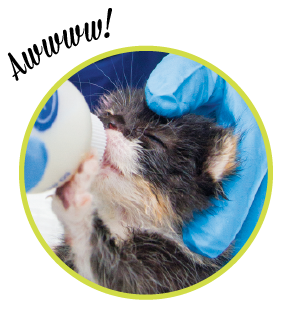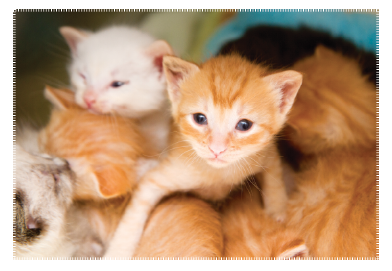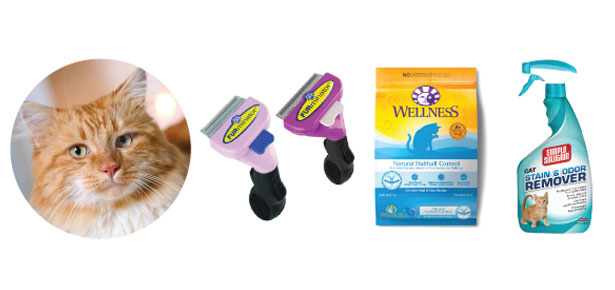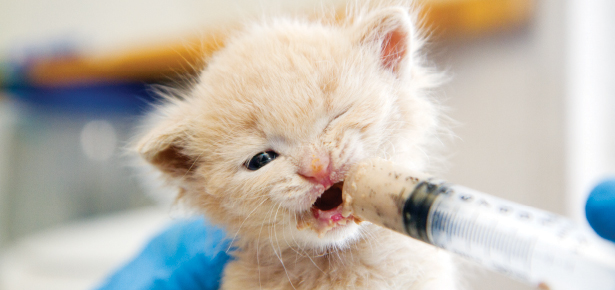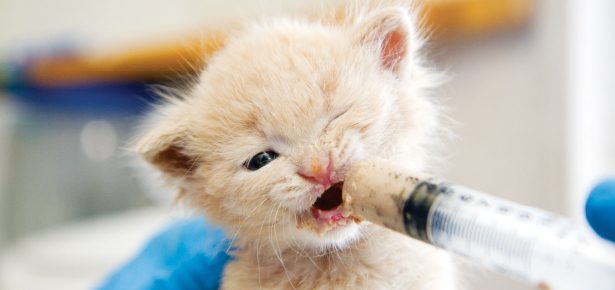
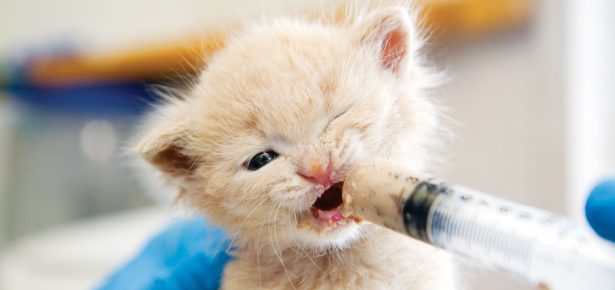
What You Should Do If You Find A Kitten
You'll likely have to fight your instincts. Read on for tips from Best Friends Animal Society…
Twelve years ago, it seemed like the right thing to do. Janice Dankert found a litter of tiny kittens under her porch and her first response was to scoop them up.
“I hadn’t realized that free-roaming female cats—who haven’t been spayed yet—do leave their kittens alone for a few hours every day,” says Dankert, now a community cat expert for Utah-based Best Friends Animal Society.
“But the vast majority of the time the mama returns in plenty of time to feed them. When I took these kittens into my home and started bottle-feeding them, I had no idea how much work, time, and emotion was ultimately involved. I also didn’t know at that time that the best chance for survival for neonatal kittens that are born outside is to keep them with their mother. Fortunately, I was able to carry this through and these kittens made it.
But there was yet another problem: “I also didn’t realize that female cats go into heat again immediately if their kittens are pulled from them. Two months later, I had the same mother cat back under my porch with another litter of kittens. It was then I realized the enormity of this problem. Honestly, that is what led me to get actively involved in helping community cats,” said Dankert who now heads up Best Friends’ Four Directions Community Cat Program in southern Utah.
Roughly 70 percent of the cats who end up in America’s shelters are killed. (Please, please spay and neuter your cats, people!) Most of these are community cats, either stray or free roaming. Best Friends is working to save lives by implementing innovative trap/neuter/return (TNR) programs across the US. Through TNR efforts, cats are humanely trapped then taken to a veterinarian who spays or neuters them cat, vaccinates, and tips one ear as a visual signal that this cat has been sterilized. The cats then are returned to their outdoor home to live out their lives.
“Right now we are in what is known as ‘kitten season’ and shelter employees everywhere are bracing themselves for the influx of babies,” said Dankert. (Kitten season is really three seasons in one, starting in spring, peaking in late spring or early summer, and ending in fall.) “At Best Friends, we hear from shelters all over the country that are overwhelmed with the arrival of kittens still weeks away from being old enough to be weaned, spayed or neutered, and adopted. Some arrive without mothers and need to be bottle-fed every two hours, and the workload almost immediately outweighs what shelter staff can take on.
“What I don’t think most people understand is that most animals shelters simply do not have the resources to care for neonatal kittens, so well-meaning people who ‘rescue’ a litter of kittens by taking them to the shelter have in almost every instance inadvertently signed the kittens’ death sentences.” Dankert said.
Best Friends Animal Society offers the following tips on what to do if you find a litter of kittens outdoors:
- First of all—don’t panic. Observe and leave the kittens alone. Make sure they have been abandoned before you take action. You’ll often find that their mother is simply out looking for food or for a good place to move them. Take note of the exact location so you can share the address and description of where the kittens are located if you find that they have been abandoned.
- Contact your local animal shelter to get the contact information for your local community cat or TNR program. These groups will be able to determine if mother comes back in a normal time frame or if the kittens will need to be bottle-fed.
- Though it may go against your instincts, don’t immediately scoop kittens up and take them to the shelter.
- If the mother does not come back and you are willing to volunteer with your local group to care for the kittens, please first read Best Friends’ resource article “Orphaned Kitten Care and Feeding”.
- If the mother does return, keep your eye on her and the kittens until they are old enough to be trapped, spayed or neutered, and returned to the area they came from. TNR is not only the most humane method of preventing cats from entering the shelter system, it’s the most effective.
Join the newsletter and never miss out on cat content again!
"*" indicates required fields
By clicking the arrow, you agree to our web Terms of Use and Privacy & Cookie Policy. Easy unsubscribe links are provided in every email.





